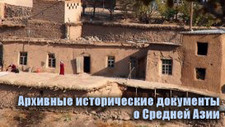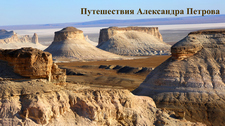You are here
Buddhist stone Tamga-Tash.
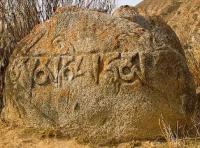
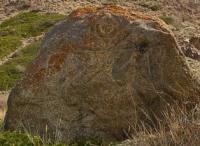
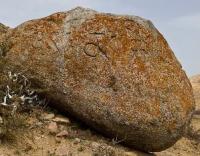
Buddhist inscriptions in Kyrgyzstan.
"The entire universe, like a shining crystal, is located in the very center of my heart, in the depths of the lotus, which I am myself. This is the light of the manifested consciousness living inside me."
Excursion to Buddhist stone Tamga-Tash.
Tamga-Tash stone is located at an altitude of 1872 meters above sea level, is located on right bank of Tamga River, on southern coast of Lake Issyk-Kul, 7 kilometers southeast of village of Tamga, in Jety-Oguz district of Issyk-Kul region.
History of Buddhist stone Tamga-Tash.
The first written mentions of the stone date back to 1890, when an ancient road cleared of stones stretched to it along the bank of the Tamga River. The name Tamga itself is one of the oldest in Kyrgyzstan, and the combination Tamga Tash means “clear imprint on stone”.
In the south-eastern part of the village of Tamga there are 3 stones on which Buddhists left their writings several centuries ago. The distance between the stones is about one kilometer. On the second stone, located nearby, a bas-relief of the sacred sign “Om” has been preserved - one of the most significant symbols of Buddhist and Hindu spirituality.
It is dated to the same period as the first inscription. According to one version, these inscriptions were created by Kalmyks, who professed Tibetan Buddhism, during their nomadic migration from the territories of modern China to the lands of the Volga region.
Probably, sacred signs were left on the stones as prayer seals - a kind of waymarks, bringing blessings to the land and travelers. Thus, Tamga-Tash is not only an archaeological site, but also a milestone in spiritual geography, a point of intersection of migration flows, cultural influences and religious traditions.
Buddhist stone Tamga-Tash: a trace of an ancient cult in the south of Issyk-Kul. On the picturesque southern shore of Lake Issyk-Kul, near the village of Tamga, a unique monument of the spiritual history of Central Asia is hidden in the mountains - the Buddhist stone Tamga-Tash.
Its name is translated from Turkic as "Stone with a seal" (from the word tamga - brand, sign), and this natural object, perpetuating Buddhist mantras, is an important evidence of the spread of Buddhism in the territory of modern Kyrgyzstan.
Historical and religious significance of Buddhist stone Tamga-Tash.
Tamga-Tash is not one stone, but several large boulders on which Buddhist inscriptions and symbols are applied. The most famous inscription is the Sanskrit mantra "Om mani padme hum", carved in the ancient Indian Brahmi script or early Tibetan script.
This mantra is closely associated with Tibetan Buddhism and symbolizes compassion and the path to enlightenment. It is believed that these inscriptions were carved around the Viiith - Xth centuries AD, when caravan routes connecting China, India and Persia passed through the territory of Semirechye and Central Asia. Along these routes, religions and teachings - including Buddhism - were spread by traders and pilgrims.
Location and features of Tamga-Tash Buddhist stone.
The Buddhist stones are located in the Tamga Valley, away from busy tourist routes. You can walk to them from the village of Tamga - the journey will take about 1.5 - 2 hours. One of the boulders lies near a stream in a narrow gorge, the other is located higher up the slope.
The inscriptions are clearly visible, especially in the morning hours, when sunlight illuminates the carved symbols. In addition to the famous mantra, on some stones you can see images of dharma wheels, lotuses and other sacred symbols associated with Buddhist cosmology.
A stone block, split in half, reminiscent of a Kyrgyz yurt in its outline, is surrounded by an inscription of half-meter letters. The inscription in Tibetan: “Om Mani Padme Hum” is repeated three times. The letters are carved in a strict monumental style, when the surface of the stone is carved around the inscription, the letters are relief-voluminous up to 10 centimeters high.
The stone consisted of two parts even before the inscription was applied. OM symbolizes Brahma - the highest, unmanifested principle, located beyond the visible world. MANI means jewel or crystal, PADME is lotus, and HUM is the heart center, the source of inner strength.
One interpretation of the mantra says: "The entire universe is like a shining crystal, located in the very center of my heart, in the depths of the lotus that I am. This is the light of the manifested consciousness living within me."
Cultural significance and protection of Tamga-Tash Buddhist stone.
Tamga-Tash is a rare and valuable monument, confirming that Buddhism was widespread in the Tien Shan mountains. It is important not only for historians and archaeologists, but also for modern followers of Buddhism, who visit this place as a shrine.
Despite its significance, the site does not have a developed infrastructure, is not properly protected, and natural conditions (rain, wind, frost) gradually destroy the inscriptions. There is also a risk of vandalism. In recent years, calls have been growing to include Tamga-Tash in the list of protected cultural monuments of Kyrgyzstan.
Conclusion about Tamga-Tash Buddhist stone.
The Tamga-Tash Buddhist stone is not just a boulder with an ancient inscription. It is a silent witness of the great spiritual path that passed through the heart of Asia. Tamga-Tash is not just a stone with an ancient inscription. It is a sacred artifact, a symbol of multi-layered history, a trace of the Buddhist presence in the heart of the Tien-Shan. It reminds us of the times when the spiritual path was measured not by the borders of states, but by the depth of the heart and the purity of intentions.
It combines the natural beauty of Issyk-Kul, the cultural heritage of the peoples of the region and the ancient philosophy of Buddhism. A visit to this place is not only a trip to the mountains, but also a touch of centuries-old wisdom.
Legend of Buddhist stone Tamga-Tash.
The legend of the Buddhist stone Tamga-Tash, which is passed down among the locals of southern Issyk-Kul. Tamga-Tash is the seal of the Heavenly Teacher. Once upon a time, long before modern peoples came to the land of Issyk-Kul, a great teacher lived in these places - a wandering sage who had the gift of healing bodies and souls.
He came from the East and brought with him the light of knowledge, peace and compassion. People called him the Teacher from the Mountains, and, according to legend, he could talk to animals, understand the language of the wind and read signs in the sky.
The Teacher often secluded himself in the mountains above the current village of Tamga, where mountain streams bubble and silence reigns. There he meditated, calling upon the spirits of purity and peace. It was in this place that he once left his "tamga" on a large stone - a sacred sign filled with power.
They say that he did not carve it with an ordinary knife, but with a fiery finger, leaving a seal of energy and prayer. According to legend, the inscription on the stone is a mantra capable of protecting the land and the people living under the mountains.
As long as the inscription remains intact and legible, the lands of Tamga will be protected from disasters, the waters of the lake will be healing, and the mountains will not run out of shepherds, children and nomads. Some old people say that during the full moon the stone seems to glow, and if you approach it with pure thoughts, you can hear the barely audible hum of a mantra, like the echo of an ancient Buddhist bell.
Moral of legend about Buddhist stone Tamga-Tash.
The legend about Tamga-Tash reminds us of the importance of spiritual knowledge, peace and respect for nature. The stone is not just a stone, but a link between the past and the present, between man and Heaven.
Geographic coordinates of Buddhist stone Tamga-Tash 1: N42°06'47 E77°31'16
Geographical coordinates of Buddhist stone Tamga-Tash 2: N42°06'46 E77°31'15
Geographical coordinates of Buddhist stone Tamga-Tash 3: N42°06'32 E77°31'21
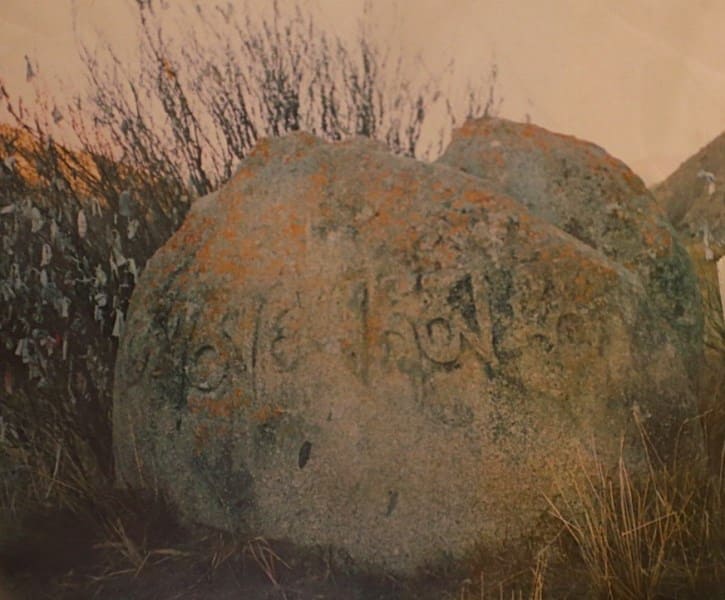
Authority:
Alexander Petrov.
Photos by:
https://www.facebook.com/Kyrgyzskyland





